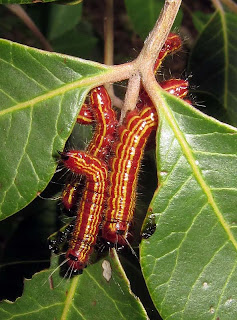Well, OK, at least two of these birds
were easy. The first one below is an Undulated Antpitta, coming into
its daily breakfast of washed and cut-up earthworms right outside our
lodge at 6:30 am. The lodge is Casa Simpson at Jocotoco Foundation's
Tapichalaca Reserve.
Then next bird is the star of the lodge
-- the Jocotoco Antpitta, the largest member of the family and one of
the most range restricted, discovered here south of Loja only 14
years ago. It's a good 45 minute walk up one of the trails (1.5 hours
with birding), and two to three birds come for their worms at 8:30.
Though they are habituated to the feeding, they are totally wild
birds. This technique of making antpittas easier for birding tourists
to see is becoming more widespread but stems very recently from the
pioneer Angel Paz and his Giant Antpitta near Mindo. But the concept
is much older, with feeder birds being trained to even land on your
hand probably a centuries-old practice. I remember reading a book
from my high school library on how to hand tame your feeder birds. I
was excited to try it, but the author of the book had the advantage
of snow-bound Massachusetts and hopelessly dependent birds which he
worked with. My feeder birds in mild northern California had too
much wild food to care about what was on my hand. But it seems the
conditioning method used for these antpittas is the same, and indeed,
food in the tropics can be quite a scarce resource.
Here's the setup, with a Jocotoco
Antpitta on the rock just below center.
These next two weren't so easy,
requiring some patience, playback, and luck. This one is a
Slate-crowned Antpitta.
And this is a Barred Antthrush, usually
a very hard bird to see. We got lucky that this one was right next to
the trail.
I'll end this post from Ecuador with
this spectacular day-flying moth (Geometridae?) just down the road
from the lodge. We had a dry, almost sunny morning, a rarity in this
place of nearly perpetual fog, mist, and rain. Butterflies and many
other insects came out in force, frantically mating, pollinating, and
thermoregulating.
We have two more days in Ecuador, then
I continue on to Peru for a fam trip to visit some new lodges on the
Manu circuit. Thanks to Jon Feenstra for uploading and emailing my
photos so I could post to this blog. I may have text-only updates
from now on.













































